Aten SN0132CO User Manual

Serial Console Server
SN0108CO / SN0116CO / SN0132CO / SN0148CO / SN9108CO / SN9116CO / SN0108COD / SN0116COD / SN0132COD / SN0148COD
User Manual
www.aten.com
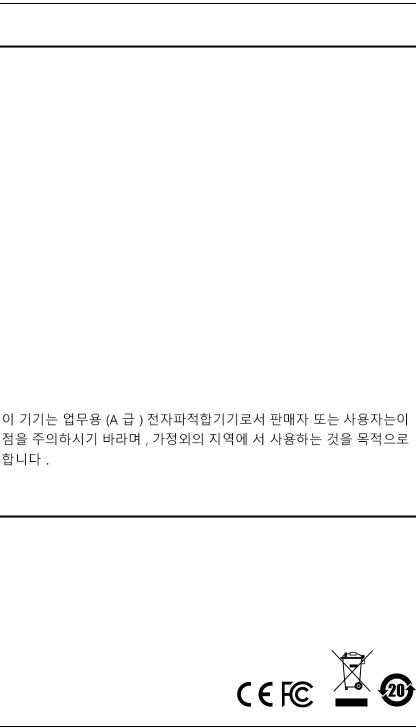
Serial Console Server User Manual
EMC Information
FEDERAL COMMUNICATIONS COMMISSION INTERFERENCE STATEMENT: This equipment has been tested and found to comply with the limits for a Class A digital device, pursuant to Part 15 of the FCC Rules. These limits are designed to provide reasonable protection against harmful interference when the equipment is operated in a commercial environment. This equipment generates, uses, and can radiate radio frequency energy and, if not installed and used in accordance with the instruction manual, may cause harmful interference to radio communications. Operation of this equipment in a residential area is likely to cause harmful interference in which case the user will be required to correct the interference at his own expense.
This device complies with Part 15 of the FCC Rules. Operation is subject to the following two conditions: (1) this device mat not cause harmful interference, and (2) this device must accept any interference received, including interference that may cause undesired operation.
FCC Caution: Any changes or modifications not expressly approved by the party responsible for compliance could void the user's authority to operate this equipment.
Warning: Operation of this equipment in a residential environment could cause radio interference.
KCC Statement:
RoHS
This product is RoHS compliant.
ii

Serial Console Server User Manual
Battery Safety Notice
There is a risk of explosion if the battery is replaced with an incorrect type. Dispose of used batteries according to the relevant instructions.
Batterie avis de sécurité
Il existe un risque d'explosion si la batterie est remplacée par un incorrect tapez. Jeter les piles usagées selon la pertinente instructions.
iii

Serial Console Server User Manual
User Information
Online Registration
Be sure to register your product at our online support center:
International http://eservice.aten.com
Telephone Support
For telephone support, call this number:
International |
886-2-8692-6959 |
|
|
China |
86-400-810-0-810 |
|
|
Japan |
81-3-5615-5811 |
|
|
Korea |
82-2-467-6789 |
|
|
North America |
1-888-999-ATEN ext 4988 |
|
1-949-428-1111 |
|
|
User Notice
All information, documentation, and specifications contained in this manual are subject to change without prior notification by the manufacturer. The manufacturer makes no representations or warranties, either expressed or implied, with respect to the contents hereof and specifically disclaims any warranties as to merchantability or fitness for any particular purpose. Any of the manufacturer's software described in this manual is sold or licensed as is. Should the programs prove defective following their purchase, the buyer (and not the manufacturer, its distributor, or its dealer), assumes the entire cost of all necessary servicing, repair and any incidental or consequential damages resulting from any defect in the software.
The manufacturer of this system is not responsible for any radio and/or TV interference caused by unauthorized modifications to this device. It is the responsibility of the user to correct such interference.
The manufacturer is not responsible for any damage incurred in the operation of this system if the correct operational voltage setting was not selected prior to operation. PLEASE VERIFY THAT THE VOLTAGE SETTING IS CORRECT BEFORE USE.
iv

Serial Console Server User Manual
Package Contents
The Serial Console Server package consists of:
SN0108CO / SN0116CO
1SN0108CO / SN0116CO Serial Console Server
1Laptop USB Console Cable
2Power Cords 1 Mounting Kit
2Lok-U-Plugs
1Lok-U-Plug Installation Tool
1Foot Pad Set (4 pcs.)
1User Instructions*
SN0108COD / SN0116COD
1SN0108COD / SN0116COD Serial Console Server
1Laptop USB Console Cable
1Mounting Kit
1Foot Pad Set (4 pcs.)
1User Instructions*
SN0132CO / SN0148CO
1SN0132CO / SN0148CO Serial Console Server
1Laptop USB Console Cable
2 Power Cords
1Mounting Kit
1Foot Pad Set (4 pcs.)
1User Instructions*
v
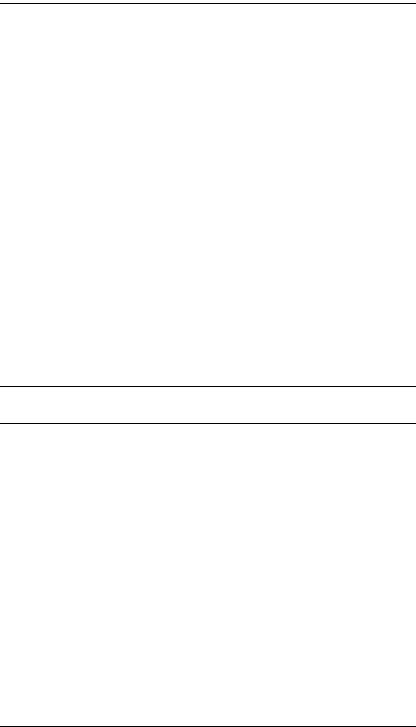
Serial Console Server User Manual
SN0132COD / SN0148COD
1SN0132COD / SN0148COD Serial Console Server
1Laptop USB Console Cable
1Mounting Kit
1Foot Pad Set (4 pcs.)
1User Instructions*
SN9108CO / SN9116CO
1SN9108CO / SN9116CO Serial Console Server
1Power Cord
1Mounting Kit
1Lok-U-Plug
1Lok-U-Plug Installation Tool
1Foot Pad Set (4 pcs.)
1User Instructions*
*Features may have been added since this manual was published. Please visit our website to download the most up-to-date version of the manual.
Check to make sure that all of the components are present and in good order. If anything is missing, or was damaged in shipping, contact your dealer. Read this manual thoroughly and follow the installation and operation procedures carefully to prevent any damage to the Serial Console Server or to any other devices on the installation.
Copyright © 2018 ATEN® International Co., Ltd.
Manual Date: 2019-01-24
Altusen and the Altusen logo are registered trademarks of ATEN International Co., Ltd. All rights reserved. All other brand names and trademarks are the registered property of their respective owners.
vi

Serial Console Server User Manual
Contents
EMC Information . . . . . . . . . . . . . . . . . . . . . . . . . . . . . . . . . . . . . . . . . . . . ii Battery Safety Notice. . . . . . . . . . . . . . . . . . . . . . . . . . . . . . . . . . . . . . .iii Batterie avis de sécurité . . . . . . . . . . . . . . . . . . . . . . . . . . . . . . . . . . . .iii User Information . . . . . . . . . . . . . . . . . . . . . . . . . . . . . . . . . . . . . . . . . . . . iv Online Registration . . . . . . . . . . . . . . . . . . . . . . . . . . . . . . . . . . . . . . . iv Telephone Support . . . . . . . . . . . . . . . . . . . . . . . . . . . . . . . . . . . . . . . iv User Notice . . . . . . . . . . . . . . . . . . . . . . . . . . . . . . . . . . . . . . . . . . . . . iv Package Contents . . . . . . . . . . . . . . . . . . . . . . . . . . . . . . . . . . . . . . . . . . . v SN0108CO / SN0116CO. . . . . . . . . . . . . . . . . . . . . . . . . . . . . . . . . . . . v SN0108COD / SN0116COD . . . . . . . . . . . . . . . . . . . . . . . . . . . . . . . . v SN0132CO / SN0148CO . . . . . . . . . . . . . . . . . . . . . . . . . . . . . . . . . . . v SN0132COD / SN0148COD . . . . . . . . . . . . . . . . . . . . . . . . . . . . . . . vi SN9108CO / SN9116CO . . . . . . . . . . . . . . . . . . . . . . . . . . . . . . . . . . vi Contents . . . . . . . . . . . . . . . . . . . . . . . . . . . . . . . . . . . . . . . . . . . . . . . . . . vii About This Manual . . . . . . . . . . . . . . . . . . . . . . . . . . . . . . . . . . . . . . . . . . xii Overview . . . . . . . . . . . . . . . . . . . . . . . . . . . . . . . . . . . . . . . . . . . . . . . xii Conventions . . . . . . . . . . . . . . . . . . . . . . . . . . . . . . . . . . . . . . . . . . . .xiii Terminology . . . . . . . . . . . . . . . . . . . . . . . . . . . . . . . . . . . . . . . . . . . .xiv
Chapter 1.Introduction
Overview. . . . . . . . . . . . . . . . . . . . . . . . . . . . . . . . . . . . . . . . . . . . . . . . . . .1
Features . . . . . . . . . . . . . . . . . . . . . . . . . . . . . . . . . . . . . . . . . . . . . . . . . . .3
System Accessibility and Availability. . . . . . . . . . . . . . . . . . . . . . . . . . .3
Serial Console Management. . . . . . . . . . . . . . . . . . . . . . . . . . . . . . . . .3
Security . . . . . . . . . . . . . . . . . . . . . . . . . . . . . . . . . . . . . . . . . . . . . . . . .4
System Management . . . . . . . . . . . . . . . . . . . . . . . . . . . . . . . . . . . . . .4
Serial Device Management . . . . . . . . . . . . . . . . . . . . . . . . . . . . . . . . . .5
Language . . . . . . . . . . . . . . . . . . . . . . . . . . . . . . . . . . . . . . . . . . . . . . .5
Requirements . . . . . . . . . . . . . . . . . . . . . . . . . . . . . . . . . . . . . . . . . . . . . . .6
DTE/DCE Auto-Sensing . . . . . . . . . . . . . . . . . . . . . . . . . . . . . . . . . . . .7
Browsers . . . . . . . . . . . . . . . . . . . . . . . . . . . . . . . . . . . . . . . . . . . . . . .8
Components . . . . . . . . . . . . . . . . . . . . . . . . . . . . . . . . . . . . . . . . . . . . . . . .9
SN0108CO / SN0108COD Front View . . . . . . . . . . . . . . . . . . . . . . . . .9
SN0116CO / SN0116COD Front View . . . . . . . . . . . . . . . . . . . . . . . . .9
SN0132CO / SN0132COD Front View . . . . . . . . . . . . . . . . . . . . . . . .11
SN0148CO / SN0148COD Front View . . . . . . . . . . . . . . . . . . . . . . . .11
SN9108CO Front View . . . . . . . . . . . . . . . . . . . . . . . . . . . . . . . . . . . .13
SN9116CO Front View . . . . . . . . . . . . . . . . . . . . . . . . . . . . . . . . . . . .13
SN0108CO Rear View . . . . . . . . . . . . . . . . . . . . . . . . . . . . . . . . . . . .15
SN0116CO Rear View . . . . . . . . . . . . . . . . . . . . . . . . . . . . . . . . . . . .15
SN0108COD Rear View (DC Power) . . . . . . . . . . . . . . . . . . . . . . . . .16
SN0116COD Rear View (DC Power) . . . . . . . . . . . . . . . . . . . . . . . . .16
SN0132CO Rear View . . . . . . . . . . . . . . . . . . . . . . . . . . . . . . . . . . . .17
SN0148CO Rear View . . . . . . . . . . . . . . . . . . . . . . . . . . . . . . . . . . . .17
vii

Serial Console Server User Manual
SN0132COD Rear View (DC Power) . . . . . . . . . . . . . . . . . . . . . . . . . 18
SN0148COD Rear View (DC Power) . . . . . . . . . . . . . . . . . . . . . . . . . 18
SN9108CO Rear View . . . . . . . . . . . . . . . . . . . . . . . . . . . . . . . . . . . . 19
SN9116CO Rear View . . . . . . . . . . . . . . . . . . . . . . . . . . . . . . . . . . . . 19
Chapter 2.Hardware Setup
Before You Begin . . . . . . . . . . . . . . . . . . . . . . . . . . . . . . . . . . . . . . . . . . . 21
Stacking and Rack Mounting . . . . . . . . . . . . . . . . . . . . . . . . . . . . . . . . . . 21
Stacking . . . . . . . . . . . . . . . . . . . . . . . . . . . . . . . . . . . . . . . . . . . . . . . 21
Rack Mounting . . . . . . . . . . . . . . . . . . . . . . . . . . . . . . . . . . . . . . . . . . 23
Rack Mounting - Front. . . . . . . . . . . . . . . . . . . . . . . . . . . . . . . . . . 23
Rack Mounting - Rear . . . . . . . . . . . . . . . . . . . . . . . . . . . . . . . . . . 25
Serial Console Server Installation . . . . . . . . . . . . . . . . . . . . . . . . . . . . . . 27
SN0108CO / SN0116CO / SN0132CO / SN0148CO Installation . . . . 27
SN9108CO / SN9116CO Installation . . . . . . . . . . . . . . . . . . . . . . . . . 30
Chapter 3.Super Administrator Setup
Overview. . . . . . . . . . . . . . . . . . . . . . . . . . . . . . . . . . . . . . . . . . . . . . . . . . 33
First Time Setup . . . . . . . . . . . . . . . . . . . . . . . . . . . . . . . . . . . . . . . . . . . . 33
Local Login . . . . . . . . . . . . . . . . . . . . . . . . . . . . . . . . . . . . . . . . . . . . . 33
Laptop USB Console (LUC) Login - SNViewerUSB . . . . . . . . . . . 34
Console Login - HyperTerminal. . . . . . . . . . . . . . . . . . . . . . . . . . . 34
Local Console Main Menu. . . . . . . . . . . . . . . . . . . . . . . . . . . . . . . 35
Remote Login . . . . . . . . . . . . . . . . . . . . . . . . . . . . . . . . . . . . . . . . . . . 36
Telnet Login. . . . . . . . . . . . . . . . . . . . . . . . . . . . . . . . . . . . . . . . . . 36
PuTTY Login . . . . . . . . . . . . . . . . . . . . . . . . . . . . . . . . . . . . . . . . . 36
Browser Login . . . . . . . . . . . . . . . . . . . . . . . . . . . . . . . . . . . . . . . 37
Setup . . . . . . . . . . . . . . . . . . . . . . . . . . . . . . . . . . . . . . . . . . . . . . . . . . . . 38
Network Setup. . . . . . . . . . . . . . . . . . . . . . . . . . . . . . . . . . . . . . . . . . . 38
Changing the Super Administrator Login . . . . . . . . . . . . . . . . . . . . . . 39
Chapter 4.The User Interface
Overview . . . . . . . . . . . . . . . . . . . . . . . . . . . . . . . . . . . . . . . . . . . . . . . . . 41
Access . . . . . . . . . . . . . . . . . . . . . . . . . . . . . . . . . . . . . . . . . . . . . . . . . . . 41
Local Console Operation . . . . . . . . . . . . . . . . . . . . . . . . . . . . . . . . . . . . . 42
Remote Operation . . . . . . . . . . . . . . . . . . . . . . . . . . . . . . . . . . . . . . . . . . 43
Web Browser Login. . . . . . . . . . . . . . . . . . . . . . . . . . . . . . . . . . . . . . . 43
The Web Browser Main Page . . . . . . . . . . . . . . . . . . . . . . . . . . . . . . 44
Page Components . . . . . . . . . . . . . . . . . . . . . . . . . . . . . . . . . . . . . . . 44
The Tab Bar . . . . . . . . . . . . . . . . . . . . . . . . . . . . . . . . . . . . . . . . . . . . 46
SNViewer . . . . . . . . . . . . . . . . . . . . . . . . . . . . . . . . . . . . . . . . . . . . . . 47
SNViewer Control Panel . . . . . . . . . . . . . . . . . . . . . . . . . . . . . . . . 47
Control Panel Functions . . . . . . . . . . . . . . . . . . . . . . . . . . . . . . . . . . . 48
Data Import . . . . . . . . . . . . . . . . . . . . . . . . . . . . . . . . . . . . . . . . . . . . 49
Encode . . . . . . . . . . . . . . . . . . . . . . . . . . . . . . . . . . . . . . . . . . . . . . . . 50
The Message Board . . . . . . . . . . . . . . . . . . . . . . . . . . . . . . . . . . . . . . 50
Message Display Panel. . . . . . . . . . . . . . . . . . . . . . . . . . . . . . . . . 50
viii

Serial Console Server User Manual
Compose Panel . . . . . . . . . . . . . . . . . . . . . . . . . . . . . . . . . . . . . . .50
User List Panel . . . . . . . . . . . . . . . . . . . . . . . . . . . . . . . . . . . . . . .50
Macros . . . . . . . . . . . . . . . . . . . . . . . . . . . . . . . . . . . . . . . . . . . . . . . .51
Terminal Settings . . . . . . . . . . . . . . . . . . . . . . . . . . . . . . . . . . . . . . . .52
Terminal Application . . . . . . . . . . . . . . . . . . . . . . . . . . . . . . . . . . . . . .54
Telnet Menu-Driven Text UI. . . . . . . . . . . . . . . . . . . . . . . . . . . . . .54
Chapter 5.Port Operating Modes
Overview. . . . . . . . . . . . . . . . . . . . . . . . . . . . . . . . . . . . . . . . . . . . . . . . . .55
Operating Mode . . . . . . . . . . . . . . . . . . . . . . . . . . . . . . . . . . . . . . . . . . . .56
Console Management . . . . . . . . . . . . . . . . . . . . . . . . . . . . . . . . . . . . .56
Real COM Port . . . . . . . . . . . . . . . . . . . . . . . . . . . . . . . . . . . . . . . . . .56
TCP Server / TCP Client (Serial Tunnel). . . . . . . . . . . . . . . . . . . . . . .56
TCP Server (RAW TCP) . . . . . . . . . . . . . . . . . . . . . . . . . . . . . . . .56
TCP Client . . . . . . . . . . . . . . . . . . . . . . . . . . . . . . . . . . . . . . . . . . .57
UDP Mode. . . . . . . . . . . . . . . . . . . . . . . . . . . . . . . . . . . . . . . . . . . . . .57
Virtual Modem . . . . . . . . . . . . . . . . . . . . . . . . . . . . . . . . . . . . . . . . . . .57
Console Management Direct. . . . . . . . . . . . . . . . . . . . . . . . . . . . . . . .58
Disabled . . . . . . . . . . . . . . . . . . . . . . . . . . . . . . . . . . . . . . . . . . . . . . .58
Chapter 6.Port Access
Overview. . . . . . . . . . . . . . . . . . . . . . . . . . . . . . . . . . . . . . . . . . . . . . . . . .59
The Sidebar . . . . . . . . . . . . . . . . . . . . . . . . . . . . . . . . . . . . . . . . . . . . . . .60
The Sidebar Tree Structure. . . . . . . . . . . . . . . . . . . . . . . . . . . . . . . . .60
Filter . . . . . . . . . . . . . . . . . . . . . . . . . . . . . . . . . . . . . . . . . . . . . . . . . .61
Connections . . . . . . . . . . . . . . . . . . . . . . . . . . . . . . . . . . . . . . . . . . . . . . .62
Telnet/SSH . . . . . . . . . . . . . . . . . . . . . . . . . . . . . . . . . . . . . . . . . . . . .63
Port Attributes . . . . . . . . . . . . . . . . . . . . . . . . . . . . . . . . . . . . . . . . . . .63
Favorites . . . . . . . . . . . . . . . . . . . . . . . . . . . . . . . . . . . . . . . . . . . . . . . . .65
History. . . . . . . . . . . . . . . . . . . . . . . . . . . . . . . . . . . . . . . . . . . . . . . . . . . .65
Preferences. . . . . . . . . . . . . . . . . . . . . . . . . . . . . . . . . . . . . . . . . . . . . . . .66
Sessions . . . . . . . . . . . . . . . . . . . . . . . . . . . . . . . . . . . . . . . . . . . . . . . . . .67
Access. . . . . . . . . . . . . . . . . . . . . . . . . . . . . . . . . . . . . . . . . . . . . . . . . . . .68
Properties . . . . . . . . . . . . . . . . . . . . . . . . . . . . . . . . . . . . . . . . . . . . . . . . .70
Save & Copy . . . . . . . . . . . . . . . . . . . . . . . . . . . . . . . . . . . . . . . . .71
Port Buffering . . . . . . . . . . . . . . . . . . . . . . . . . . . . . . . . . . . . . . . . . . .72
Operating Mode . . . . . . . . . . . . . . . . . . . . . . . . . . . . . . . . . . . . . . . . .73
Alert Strings . . . . . . . . . . . . . . . . . . . . . . . . . . . . . . . . . . . . . . . . . .74
Command Filters . . . . . . . . . . . . . . . . . . . . . . . . . . . . . . . . . . . . .75
Chapter 7.User Management
Overview. . . . . . . . . . . . . . . . . . . . . . . . . . . . . . . . . . . . . . . . . . . . . . . . . .81
Users . . . . . . . . . . . . . . . . . . . . . . . . . . . . . . . . . . . . . . . . . . . . . . . . . . . .82
Adding Users . . . . . . . . . . . . . . . . . . . . . . . . . . . . . . . . . . . . . . . . . . .82
Modifying User Accounts . . . . . . . . . . . . . . . . . . . . . . . . . . . . . . . . . .85
Deleting User Accounts . . . . . . . . . . . . . . . . . . . . . . . . . . . . . . . . . . .85
Groups . . . . . . . . . . . . . . . . . . . . . . . . . . . . . . . . . . . . . . . . . . . . . . . . . . .86
ix

Serial Console Server User Manual
Creating Groups . . . . . . . . . . . . . . . . . . . . . . . . . . . . . . . . . . . . . . . . . 86 Modifying Groups . . . . . . . . . . . . . . . . . . . . . . . . . . . . . . . . . . . . . . . . 88 Deleting Groups . . . . . . . . . . . . . . . . . . . . . . . . . . . . . . . . . . . . . . . . . 88 Users and Groups . . . . . . . . . . . . . . . . . . . . . . . . . . . . . . . . . . . . . . . . . . 89 Assigning Users to a Group From the User’s Notebook . . . . . . . . . . . 89 Removing Users From a Group From the User’s Notebook . . . . . . . 91 Assigning Users to a Group From the Group’s Notebook . . . . . . . . . 92 Removing Users From a Group From the Group’s Notebook . . . . . . 93 Device Assignment . . . . . . . . . . . . . . . . . . . . . . . . . . . . . . . . . . . . . . . . . 94 Assigning Device Permissions under User Settings . . . . . . . . . . . . . . 94 Assigning Device Permissions under Group Settings . . . . . . . . . . . . 96
Chapter 8.Device Management
Devices. . . . . . . . . . . . . . . . . . . . . . . . . . . . . . . . . . . . . . . . . . . . . . . . . . . 97
General . . . . . . . . . . . . . . . . . . . . . . . . . . . . . . . . . . . . . . . . . . . . . 97
Mounted Devices. . . . . . . . . . . . . . . . . . . . . . . . . . . . . . . . . . . . . . 98
Network . . . . . . . . . . . . . . . . . . . . . . . . . . . . . . . . . . . . . . . . . . . . . . 100
IP Installer . . . . . . . . . . . . . . . . . . . . . . . . . . . . . . . . . . . . . . . . . 101
Service Ports. . . . . . . . . . . . . . . . . . . . . . . . . . . . . . . . . . . . . . . . 101
Network Configuration . . . . . . . . . . . . . . . . . . . . . . . . . . . . . . . . 102
ANMS . . . . . . . . . . . . . . . . . . . . . . . . . . . . . . . . . . . . . . . . . . . . . . . . 105
Event Destination . . . . . . . . . . . . . . . . . . . . . . . . . . . . . . . . . . . . 105
Authentication and Authorization . . . . . . . . . . . . . . . . . . . . . . . . 109
CC Management Settings . . . . . . . . . . . . . . . . . . . . . . . . . . . . . 113
OOBC . . . . . . . . . . . . . . . . . . . . . . . . . . . . . . . . . . . . . . . . . . . . . . . . 114
Enable Dial Back . . . . . . . . . . . . . . . . . . . . . . . . . . . . . . . . . . . . 117
Enable Dial Out . . . . . . . . . . . . . . . . . . . . . . . . . . . . . . . . . . . . . . 117
Security . . . . . . . . . . . . . . . . . . . . . . . . . . . . . . . . . . . . . . . . . . . . . . 119
Login Failures . . . . . . . . . . . . . . . . . . . . . . . . . . . . . . . . . . . . . . . 119
Security Level . . . . . . . . . . . . . . . . . . . . . . . . . . . . . . . . . . . . . . . 120
Working Mode . . . . . . . . . . . . . . . . . . . . . . . . . . . . . . . . . . . . . . . 120
IP/MAC Filter. . . . . . . . . . . . . . . . . . . . . . . . . . . . . . . . . . . . . . . . 121
Account Policy . . . . . . . . . . . . . . . . . . . . . . . . . . . . . . . . . . . . . . 123
Association . . . . . . . . . . . . . . . . . . . . . . . . . . . . . . . . . . . . . . . . . . . . 124
Date/Time . . . . . . . . . . . . . . . . . . . . . . . . . . . . . . . . . . . . . . . . . . . . . 125
Current System Time . . . . . . . . . . . . . . . . . . . . . . . . . . . . . . . . . 125
New System Time . . . . . . . . . . . . . . . . . . . . . . . . . . . . . . . . . . . 126
Time Zone . . . . . . . . . . . . . . . . . . . . . . . . . . . . . . . . . . . . . . . . . . 126
Chapter 9.Log
Overview. . . . . . . . . . . . . . . . . . . . . . . . . . . . . . . . . . . . . . . . . . . . . . . . . 127
System Log. . . . . . . . . . . . . . . . . . . . . . . . . . . . . . . . . . . . . . . . . . . . . . . 127
Filter . . . . . . . . . . . . . . . . . . . . . . . . . . . . . . . . . . . . . . . . . . . . . . . . . 128
Log Notification Settings . . . . . . . . . . . . . . . . . . . . . . . . . . . . . . . . . . . . 130
Chapter 10.Maintenance
Overview. . . . . . . . . . . . . . . . . . . . . . . . . . . . . . . . . . . . . . . . . . . . . . . . . 131
x

Serial Console Server User Manual
Backup / Restore. . . . . . . . . . . . . . . . . . . . . . . . . . . . . . . . . . . . . . . . . . .131
Backup . . . . . . . . . . . . . . . . . . . . . . . . . . . . . . . . . . . . . . . . . . . . . . .132
Restore . . . . . . . . . . . . . . . . . . . . . . . . . . . . . . . . . . . . . . . . . . . . . . .132
Firmware Upgrade . . . . . . . . . . . . . . . . . . . . . . . . . . . . . . . . . . . . . . . . .133
Certificates . . . . . . . . . . . . . . . . . . . . . . . . . . . . . . . . . . . . . . . . . . . . . . .134
Private Certificate . . . . . . . . . . . . . . . . . . . . . . . . . . . . . . . . . . . .134
Certificate Signing Request . . . . . . . . . . . . . . . . . . . . . . . . . . . .136
Appendix
Safety Instructions. . . . . . . . . . . . . . . . . . . . . . . . . . . . . . . . . . . . . . . . . .139
General . . . . . . . . . . . . . . . . . . . . . . . . . . . . . . . . . . . . . . . . . . . . . . .139
DC Power . . . . . . . . . . . . . . . . . . . . . . . . . . . . . . . . . . . . . . . . . . . . .142
Rack Mounting . . . . . . . . . . . . . . . . . . . . . . . . . . . . . . . . . . . . . . . . .143
Technical Support . . . . . . . . . . . . . . . . . . . . . . . . . . . . . . . . . . . . . . . . .144
International . . . . . . . . . . . . . . . . . . . . . . . . . . . . . . . . . . . . . . . . . . .144
North America . . . . . . . . . . . . . . . . . . . . . . . . . . . . . . . . . . . . . . . . .144
Specifications . . . . . . . . . . . . . . . . . . . . . . . . . . . . . . . . . . . . . . . . . . . . .145
SN0108CO / SN0116CO . . . . . . . . . . . . . . . . . . . . . . . . . . . . . . . . .145
SN0108COD / SN0116COD . . . . . . . . . . . . . . . . . . . . . . . . . . . . . .146
SN0132CO / SN0148CO . . . . . . . . . . . . . . . . . . . . . . . . . . . . . . . . .147
SN0132COD / SN0148COD . . . . . . . . . . . . . . . . . . . . . . . . . . . . . .148
SN9108CO / SN9116CO . . . . . . . . . . . . . . . . . . . . . . . . . . . . . . . . .149
IP Address Determination . . . . . . . . . . . . . . . . . . . . . . . . . . . . . . . . . . .150
The Local Console . . . . . . . . . . . . . . . . . . . . . . . . . . . . . . . . . . . . . .150
IP Installer . . . . . . . . . . . . . . . . . . . . . . . . . . . . . . . . . . . . . . . . . . . . .150
Browser . . . . . . . . . . . . . . . . . . . . . . . . . . . . . . . . . . . . . . . . . . . . . .151
IPv6 152
Link Local IPv6 Address . . . . . . . . . . . . . . . . . . . . . . . . . . . . . . . . . .152
IPv6 Stateless Autoconfiguration . . . . . . . . . . . . . . . . . . . . . . . . . . .153
Virtual Modem Details . . . . . . . . . . . . . . . . . . . . . . . . . . . . . . . . . . . . . .154
AT Command Set Support . . . . . . . . . . . . . . . . . . . . . . . . . . . . . . . .154
Port Forwarding . . . . . . . . . . . . . . . . . . . . . . . . . . . . . . . . . . . . . . . . . . .156
Clear Login Information . . . . . . . . . . . . . . . . . . . . . . . . . . . . . . . . . . . . .157
Pin Assignment . . . . . . . . . . . . . . . . . . . . . . . . . . . . . . . . . . . . . . . . . . .158
DCE Mode Pin Assignment . . . . . . . . . . . . . . . . . . . . . . . . . . . . .158
DTE Mode Pin Assignment . . . . . . . . . . . . . . . . . . . . . . . . . . . . .158
DB-9/DB-25 Interface . . . . . . . . . . . . . . . . . . . . . . . . . . . . . . . . . . . .159
DB-9. . . . . . . . . . . . . . . . . . . . . . . . . . . . . . . . . . . . . . . . . . . . . . .159
DB-25. . . . . . . . . . . . . . . . . . . . . . . . . . . . . . . . . . . . . . . . . . . . . .159
Limited Warranty. . . . . . . . . . . . . . . . . . . . . . . . . . . . . . . . . . . . . . . . . . .160
xi

Serial Console Server User Manual
About This Manual
This User Manual is provided to help you get the most from your Serial Console Server system. It covers all aspects of installation, configuration and operation. An overview of the information found in the manual is provided below.
Overview
Chapter 1, Introduction, introduces you to the Serial Console Server. Its purpose, features and benefits are presented, and its front and back panel components are described.
Chapter 2, Hardware Setup, provides step-by-step instructions for setting up your installation, and explains some basic operation procedures.
Chapter 3, Super Administrator Setup, explains the procedures that the super administrator employs to set up the Serial Console Server network environment, and change the default username and password.
Chapter 4, The User Interface, describes the layout and explains the components of the Serial Console Server user interface. Describes how to log in to the Serial Console Server with each of the available access methods: from a local console, an Internet browser, and Windows application (AP) programs.
Chapter 5, Port Operating Modes, describes the port operating modes, including Console Management and Console Management Direct modes for device control; and Real COM Port, Virtual Modem, TCP Server, TCP Client, and UDP Mode for Serial-to-Ethernet connectivity and applications that require COM ports, serial tunneling, or where TCP/UDP Socket functionality is needed.
Chapter 6, Port Access, describes the Port Access page and how to configure the options it provides regarding port and power outlet manipulation.
Chapter 7, User Management, shows super administrators and administrators how to create, modify, and delete users and groups, and assign attributes to them.
Chapter 8, Device Management, shows super administrators how to configure and control overall Serial Console Server operations.
Chapter 9, Log, explains how to install and configure the Log Server.
Chapter 10, Maintenance, explains howtobackup, restore,and upgrade the Serial Console Server and its firmware, as well as providing information about private certificates.
xii
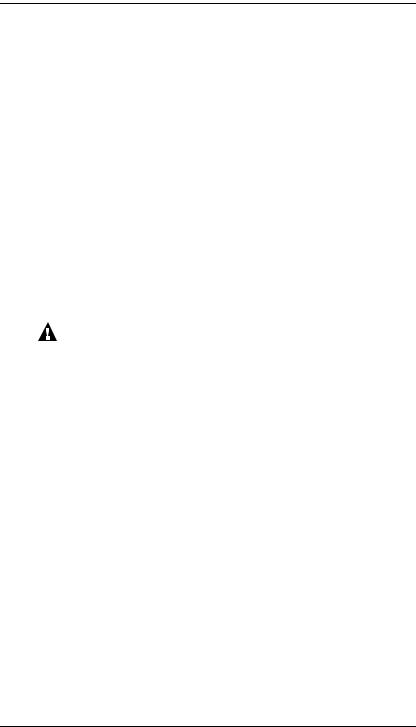
Serial Console Server User Manual
An Appendix, at the end of the manual provides technical and troubleshooting information.
Conventions
This manual uses the following conventions:
Monospaced |
Indicates text that you should key in. |
[ ] |
Indicates keys you should press. For example, [Enter] means |
|
to press the Enter key. If keys need to be chorded, they appear |
|
together in the same bracket with a plus sign between them: |
|
[Ctrl+Alt]. |
1.Numbered lists represent procedures with sequential steps.
♦Bullet lists provide information, but do not involve sequential steps.
→Indicates selecting the option (on a menu or dialog box, for example), that comes next. For example, Start → Run means to open the Start menu, and then select Run.
Indicates critical information.
xiii

Serial Console Server User Manual
Terminology
Throughout the manual we make reference to the terms Local and Remote in regard to the operators and equipment deployed in a Serial Console Server installation. Depending on the point of view, users and servers can be considered Local under some circumstances, and Remote under others:
Serial Console Server’s Point of View
Remote users – We refer to a user as a Remote user when we think of him as someone who logs into the Serial Console Server over the net from a location that is remote from the Serial Console Server.
Local Console – a computer connected directly to the Serial Console Server by a physical connection.
Servers, Serial Device, or Port Device – any device attached to the Serial Console Server’s ports via cable.
User’s Point of View
Local client users – We refer to a user as a Local user when we think of him as sitting at his computer performing operations on the devices connected to the Serial Console Server that is remote from him.
When we describe the overall system architecture we are usually speaking from the Serial Console Server’s point of view – in which case the users are considered remote. When we speak about operations users perform via the browser, viewers, and AP programs over the net, we are usually speaking from the user’s point of view – in which case the Serial Console Server and the devices connected to it are considered remote.
International |
http://www.aten.com |
|
|
North America |
http://www.aten.com/us/en/ |
|
|
xiv
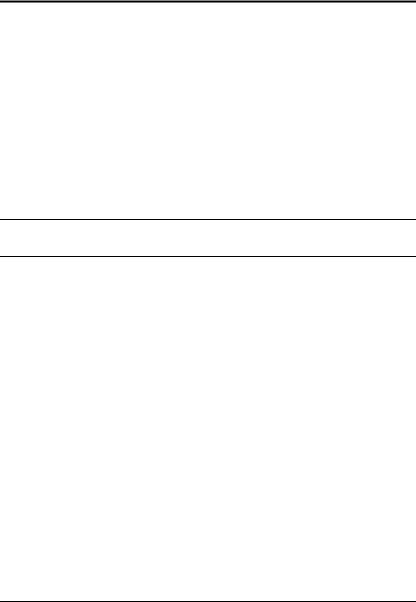
Chapter 1
Introduction
Overview
The SN01xxCO and SN91xxCO Series features Cisco pin-outs and autosensing DTE/DCE function, providing a direct connection to Cisco network switches (and other compatible devices) without rollover cables for even more time-saving IT infrastructure deployment. In addition, the SN01xxCO and SN91xxCO models support online detection of connected serial devices (including terminal blocks) for device status monitoring. A notification email alert will be sent to the administrator when connected devices are offline.
With dual Ethernet ports and power supplies, the SN01xxCO supports power redundancy as well as failover, or dual IP addresses access, ensuring 24/7 availability of access to serial devices. The SN01xxCO Series also offers dual DC (see Note) options for more flexible implementation.
Note: Available with DC power at customer’s request (SN0108COD / SN0116COD / SN0132COD / SN0148COD).
Available in 8-, 16-, 32and 48-port models, the serial console servers offer both in-band and out-of-band (OOB) remote serial console access to servers and network devices via a direct Telnet/SSH client and Java viewer. The OOB management enables IT administrators to manage network devices (e.g. router, switch, UPS) in server rooms using management networks that are separated from the main/production networks. Where access difficulty occurs in the production network, the administrators can still access them via the console server. The serial console servers offer out-of-band access methods such as direct console connection from a local computer, USB console connection from a laptop, PSTN connection via modem, or hybrid network connection via the dual LAN ports (one connected to the production network and the other connected to the management network).
Implemented with various security technologies such as TLS 1.2 data encryption, RSA 2048-bit certificates, configurable user permissions for port access and control, local/remote/third-party authentication and authorization, IP/MAC address filter, and FIPS 140-2 certified cryptography, the SN01xxCO and SN91xxCO serial console servers assure administrators the security for easy and high-level access. For instance, access rights and privileges can be applied to 8/16/32/48 serial ports individually. Data encryption is provided to
1

Serial Console Server User Manual
ensure that information and control are always protected. Logging and alerting of system events help to quickly resolve issues and mitigate risks. While secured by the above examples, the consolidated password authentication simplifies management.
The SN01xxCO and SN91xxCO Series are used to connect serial devices to an Ethernet network to allow access and control of demanding applications that manage industrial control, data acquisition, environment monitoring, remote facility operations and equipment management. Multiple operational modes are available to administrators including Console Management, Console Management Direct, Real Com Port, TCP Server/Client, UDP Server/Client, and Virtual Modem. Furthermore, the SN01xxCO Series works in tandem with ATEN’s PDU (see Note) remote power management systems. Both can be utilized through ATEN’s CC2000 software to provide centralized serial device access and integrated power management.
Note: PON port reserved for PG Series PDU.
With their comprehensive features, the SN01xxCO and SN91xxCO Series help to maximize IT productivity, increase scalability, as well as reduce installation and operational costs with easy and secure remote management of serial devices. The serial console servers save you time and money by allowing administrators to manage their data centers from practically anywhere – minimizing travel and MTTR (Mean Time to Repair) costs, ensuring the highest availability for data center services.
2

Chapter 1. Introduction
Features
System Accessibility and Availability
Secure in-band and out-of-band remote serial console access
Browser access with an intuitive GUI
Terminal-based access with a menu-driven UI
Modem dial-in/dial-back/dial-out access
Front USB ports for storage or USB-based PC cards*
Laptop USB Console (LUC) port for local console access via laptop*
Dual Ethernet ports allow fail control or dual IP address access*
Dual power supply*
Note: SN01xxCO only.
Serial Console Management
Auto-sensing DTE/DCE feature supports a direct connection to Cisco network switches (and other compatible devices) without rollover cables for more convenient IT infrastructure deployment
Online/Offline detection of connected serial devices (including terminal blocks) – automatically send event notifications when the devices are offline for device status monitoring
Convenient and simple serial device access via selectable Telnet/SSH and third-party clients such as PuTTY
Easy port access via selectable ActiveX or Java serial viewer
Comprehensive viewer functions – copy/paste, logging, data import, macros, broadcasting and message board
Sun Solaris ready – Sun “break-safe”
Alert Strings – whenever one of the pre-defined strings matches the message sent from the serial devices, you will be informed by serial console server via SNMP Trap alert and/or an email
Command filter – administrators can restrict users to execute only predefined commands
Multiple users can simultaneously access the same port – up to 16 connections per port
Modes for simultaneous access – Exclusive/Occupy/Share
3

Serial Console Server User Manual
Integrates with ATEN PDU* products for power management of each port (SN01xxCO only)
Note: PON port reserved for PG Series PDU.
Security
Supports secure login from browsers with TLS 1.2 data encryption and RSA 2048-bit certificates
Configurable user permissions for port access and control
Local and remote authentication and login
Third-party authentication via RADIUS, TACACS+, LDAP/AD and Kerberos
IP and MAC address filter for enhanced security protection
High-Grade Security – supports FIPS 140-2 level 1 security standards that use an embedded FIPS 140-2 certified OpenSSL cryptographic module (Certificate #1747, #2398, #2473)
System Management
System configuration via web browser, Telnet/SSH client and local console
System log and event login
Event Destination – Event logs will be saved to Log server, Syslog server, and USB drive*
SNMP agent
Event notification – supports notification of SMTP email, SNMP Trap, and SMS* (with additional mobile devices)
Backup / Restore system configuration and upgradeable firmware
Multi-browser support – Internet Explorer, Chrome, Firefox
NTP for time server synchronization
IPv4 / IPv6 support
Integrates into CC2000 software for centralized data center management
Integrates into CCVSR software for user session recording
Note: SN01xxCO only.
4

Chapter 1. Introduction
Serial Device Management
Versatile serial operating modes – Console Management, Console Management Direct, Real Com Port, TCP Server/Client, UDP Server/ Client, and Virtual Modem
Real COM driver for Windows 2000 or higher and Windows Server 2003/ 2008
Real TTY driver for Linux
Fixed TTY driver for UNIX
Supports baud rates of 300, 600, 1200, 1800, 2400, 4800, 9600, 19200, 28800, 38400, 57600, 115200, 230400 bps
Language
Multi-language web-based GUI – available in English, German, Japanese, Korean, Russian, Simplified Chinese and Traditional Chinese
Note: Fixed TTY Driver Supports 1) OpenServer (Sco Unix); 2) UnixWare 7, SVR 5; 3) UnixWare 2.1, SVR 4.2; 4) QNX 4.25, QNX 6; 5) FreeBSD; 6) Solaris 10; 7) AIX 5.x; 8) HP-UX 11i.
5

Serial Console Server User Manual
Requirements
The devices that connect to the Serial Console Server must support the following serial protocol:
RS-232 (protocol or terminal operations)
For Console Management operating mode; Telnet/SSH client, a third party client such as PuTTY, or web browser must be installed
For the browser-based WinClient ActiveX, SNViewer for console operating mode, and DirectX 8 must be present, and at least 2MB of memory must be available after installation.
For the browser-based Java Viewer SNViewer for console management operating mode, Java Runtime Environment (JRE) 8 or higher must be installed, and at least 2MB of memory must be available after installation. Java is available for free download from the Sun Java website:
http://java.sun.com
The Virtual COM port driver (Real COM port) support requires Windows 2000 or higher.
Under Vista (32-bit version), only the administrator can install the Virtual Port Management Utility – ordinary users can only operate the mapped Real COM ports.
The current Linux TTY driver supports kernels 2.2, 2.4, 2.6 (up to 2.6.39), and 3.1 (up to 3.1.5-23).
The Fixed TTY driver for UNIX supports: Unix, OpenServer; Unix Ware 7, SVR 5; Unix Ware 2.1, SVR 4.2; QNX 4.25, QNX 6; FreeBSD; Solaris 10; AIX 5.x; and HP-UX 11i.
For the Log Server, you must have the Microsoft Jet OLEDB 4.0 or higher driver installed.
6

Chapter 1. Introduction
DTE/DCE Auto-Sensing
To connect to RJ45 cosole ports
With Cisco pinouts and auto-sensing DTE/DCE feature, serial console server can connect to Cisco switches (and other compatible devices) with straight-through Cat 5e cables.
For serial port pin outs, please refer to Pin Assignment on page 158.
To connect to DB9 or DB25 device interface
Serial console server can connect to PC COM port (DB9) with Cisco Console Cable.
If you wish to make a DB9 or DB25 adapter, please refer to DB-9/DB-25 Interface on page 159.
7

Serial Console Server User Manual
Browsers
Supported browsers for logging into the device include the following:
Browser |
Version |
|
|
IE |
11 and higher |
|
|
Chrome |
70 and higher |
|
|
Firefox |
63 and higher |
|
|
Safari |
12 and higher |
|
|
8
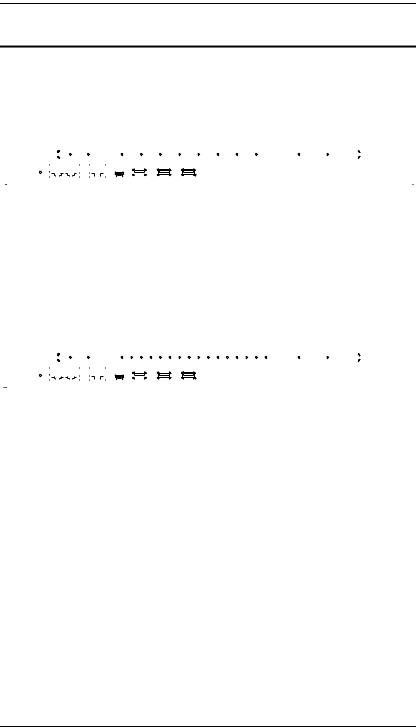
Chapter 1. Introduction
Components
SN0108CO / SN0108COD Front View
|
|
|
|
|
|
1 |
|
|
|
|
|
|
2 |
|
|
|
3 |
|
|
|||||||||||||||||
|
|
|
|
|
|
|
|
|
|
|
|
|
|
|
|
|
|
|
|
|
|
|
|
|
|
|
|
|
|
|
|
|
|
|
|
|
|
|
|
|
|
|
|
|
|
|
|
|
|
|
|
|
|
|
|
|
|
|
|
|
|
|
|
|
|
|
|
|
|
|
|
|
|
|
|
|
|
|
|
|
|
|
|
|
|
|
|
|
|
|
|
|
|
|
|
|
|
|
|
|
|
|
|
|
|
|
|
|
|
|
|
|
|
|
|
|
|
|
|
|
|
|
|
|
|
|
|
|
|
|
|
|
|
|
|
|
|
|
|
|
|
|
|
|
|
|
|
|
|
|
|
|
|
|
|
|
|
|
|
|
|
|
|
|
|
|
|
|
|
|
|
|
|
|
|
|
|
|
|
|
|
|
|
|
|
|
|
|
|
|
|
|
|
|
|
|
|
|
|
|
|
|
|
|
|
|
|
|
|
|
|
|
|
|
|
|
|
|
|
|
|
|
|
|
|
|
|
|
|
|
|
|
|
|
|
|
|
|
|
|
|
|
|
|
|
|
|
|
|
|
|
|
|
|
|
|
|
|
|
|
|
|
|
|
|
|
|
|
|
|
|
|
|
|
|
|
|
|
|
|
|
|
|
|
|
|
|
|
|
|
|
|
|
|
|
|
|
|
|
|
|
|
|
|
|
|
|
|
|
|
|
|
|
|
|
|
|
|
|
|
|
|
|
|
|
|
|
|
|
|
|
|
|
|
|
|
|
|
|
|
|
|
|
|
|
|
|
|
|
|
|
|
|
|
|
|
|
|
|
|
|
|
|
|
|
|
|
|
|
4 |
5 |
6 |
7 |
8 |
9 |
SN0116CO / SN0116COD Front View
|
|
|
|
|
1 |
|
|
|
|
|
|
|
2 |
|
|
3 |
|
|
||||||||||||||||||
|
|
|
|
|
|
|
|
|
|
|
|
|
|
|
|
|
|
|
|
|
|
|
|
|
|
|
|
|
|
|
|
|
|
|
|
|
|
|
|
|
|
|
|
|
|
|
|
|
|
|
|
|
|
|
|
|
|
|
|
|
|
|
|
|
|
|
|
|
|
|
|
|
|
|
|
|
|
|
|
|
|
|
|
|
|
|
|
|
|
|
|
|
|
|
|
|
|
|
|
|
|
|
|
|
|
|
|
|
|
|
|
|
|
|
|
|
|
|
|
|
|
|
|
|
|
|
|
|
|
|
|
|
|
|
|
|
|
|
|
|
|
|
|
|
|
|
|
|
|
|
|
|
|
|
|
|
|
|
|
|
|
|
|
|
|
|
|
|
|
|
|
|
|
|
|
|
|
|
|
|
|
|
|
|
|
|
|
|
|
|
|
|
|
|
|
|
|
|
|
|
|
|
|
|
|
|
|
|
|
|
|
|
|
|
|
|
|
|
|
|
|
|
|
|
|
|
|
|
|
|
|
|
|
|
|
|
|
|
|
|
|
|
|
|
|
|
|
|
|
|
|
|
|
|
|
|
|
|
|
|
|
|
|
|
|
|
|
|
|
|
|
|
|
|
|
|
|
|
|
|
|
|
|
|
|
|
|
|
|
|
|
|
|
|
|
|
|
|
|
|
|
|
|
|
|
|
|
|
|
|
|
|
|
|
|
|
|
|
|
|
|
|
|
|
|
|
|
|
|
|
|
|
|
|
|
|
|
|
|
|
|
|
|
|
|
|
|
|
|
|
|
|
|
|
|
|
|
|
|
|
|
|
|
|
|
|
|
|
|
4 5 6 7 8 9
No. |
Component |
Description |
|
|
|
|
|
1 |
Power LEDs |
Lights when the unit is powered up and ready to operate. |
|
2 |
Port LEDs |
The Port |
|
|
|
Flashes Green: Active – data is being transmitted through |
|
|
|
the port |
|
|
|
|
|
3 |
LAN LEDs |
Primary and Secondary 10/100/1000 Mbps LAN LEDs. |
|
|
|
RED: 10 Mbps |
|
|
|
RED + GREEN (ORANGE): 100 Mbps |
|
|
|
GREEN: 1000 Mbps |
|
Flashes to indicate that the Serial Console Server is being accessed over the LAN.
9

Serial Console Server User Manual
|
|
|
|
No. Component |
Description |
4Reset Switch Note: This switch is recessed and must be pushed with a small
object such as the end of a paper clip, or a ballpoint pen.
Pressing and releasing this switch when the unit is running performs a system reset.
Pressing and holding this switch in for more than three seconds when the unit is running resets its configuration to the factory default settings.
Note: This does not clear User Account information. See Clear Login Information, page 157, for information on clearing user account information.
Pressing and holding this switch while powering on the
|
|
switch returns the unit to its factory default firmware level, |
|
|
rather than the firmware version that the switch has been |
|
|
upgraded to. This allows you to recover from a f ailed |
|
|
firmware upgrade and gives you the opportunity to try |
|
|
upgrading the firmware again. |
|
|
Note: This operation should only be performed in the event |
|
|
of a firmware upgrade failure that results in the device |
|
|
becoming inoperable. |
|
|
|
5 |
PON Port |
Reserved. |
|
|
|
6 |
Modem Port |
For dial in connection should the unit be unavailable over the |
|
|
network. See Serial Console Server Installation, page 27, step |
|
|
6 for installation details. |
7Local Console This RJ45 port allows for local administration and access
|
Port |
through a serial terminal connection to a computer. An SA0141 |
|
|
(DTE to DTE) adapter (included in the package) is required for |
|
|
this connection. |
|
|
|
8 |
Laptop USB |
This mini-USB port allows a PC or laptop to be connected for |
|
Console Port |
local access and control. Connect to a PC or laptop to |
|
|
automatically launch a terminal emulator to access the SN text |
|
|
menu. |
9 |
USB Ports |
These three Type A female USB ports can be used to connect |
|
|
USB devices, such as USB storage devices (pen drive / hard |
|
|
drive), USB hubs and USB SIM card Reader. |
|
|
|
10

Chapter 1. Introduction
SN0132CO / SN0132COD Front View
1 |
|
2 |
|
|
|
|
|
|
3 |
||||||||||||||
|
|
|
|
|
|
|
|
|
|
|
|
|
|
|
|
|
|
|
|
|
|
|
|
|
|
|
|
|
|
|
|
|
|
|
|
|
|
|
|
|
|
|
|
|
|
|
|
|
|
|
|
|
|
|
|
|
|
|
|
|
|
|
|
|
|
|
|
|
|
|
|
|
|
|
|
|
|
|
|
|
|
|
|
|
|
|
|
|
|
|
|
|
|
|
|
|
|
|
|
|
|
|
|
|
|
|
|
|
|
|
|
|
|
|
|
|
|
|
|
|
|
|
|
|
|
|
|
|
|
|
|
|
|
|
|
|
|
|
|
|
|
|
|
|
|
|
|
|
|
|
|
|
|
|
|
|
|
|
|
|
|
|
|
|
|
|
|
|
|
|
|
|
|
|
|
|
|
|
|
|
|
|
|
|
|
|
|
|
|
|
|
|
|
|
|
|
|
|
|
|
|
|
|
|
|
|
|
|
|
|
|
|
|
|
|
4 |
5 |
6 |
7 |
8 |
9 |
SN0148CO / SN0148COD Front View
1 |
|
2 |
|
3 |
||||||||||||||||||||
|
|
|
|
|
|
|
|
|
|
|
|
|
|
|
|
|
|
|
|
|
|
|
|
|
|
|
|
|
|
|
|
|
|
|
|
|
|
|
|
|
|
|
|
|
|
|
|
|
|
|
|
|
|
|
|
|
|
|
|
|
|
|
|
|
|
|
|
|
|
|
|
|
|
|
|
|
|
|
|
|
|
|
|
|
|
|
|
|
|
|
|
|
|
|
|
|
|
|
|
|
|
|
|
|
|
|
|
|
|
|
|
|
|
|
|
|
|
|
|
|
|
|
|
|
|
|
|
|
|
|
|
|
|
|
|
|
|
|
|
|
|
|
|
|
|
|
|
|
|
|
|
|
|
|
|
|
|
|
|
|
|
|
|
|
|
|
|
|
|
|
|
|
|
|
|
|
|
|
|
|
|
|
|
|
|
|
|
|
|
|
|
|
|
|
|
|
|
|
|
|
|
|
|
|
|
|
|
|
|
|
|
|
|
|
|
|
|
|
|
|
|
|
|
|
4 5 6 7 8 9
No. |
Component |
Description |
|
|
|
|
|
1 |
Power LEDs |
Lights when the unit is powered up and ready to operate. |
|
2 |
Port LEDs |
The Port LEDs provide status information about their |
|
|
|
corresponding serial ports. |
|
|
|
Lights Green: Online – the serial device attached to the port |
|
|
|
is powered on and ready. |
|
|
|
Flashes Green: Active – data is being transmitted through |
|
|
|
the port |
|
|
|
|
|
3 |
LAN LEDs |
Primary and Secondary 10/100/1000 Mbps LAN LEDs. |
|
|
|
RED: 10 Mbps |
|
|
|
RED + GREEN (ORANGE): 100 Mbps |
|
|
|
GREEN: 1000 Mbps |
|
Flashes to indicate that the Serial Console Server is being accessed over the LAN.
11

Serial Console Server User Manual
|
|
|
|
No. Component |
Description |
4Reset Switch Note: This switch is recessed and must be pushed with a small
object such as the end of a paper clip, or a ballpoint pen.
Pressing and releasing this switch when the unit is running performs a system reset.
Pressing and holding this switch in for more than three seconds when the unit is running resets its configuration to the factory default settings.
Note: This does not clear User Account information. See Clear Login Information, page 157, for information on clearing user account information.
Pressing and holding this switch while powering on the
|
|
switch returns the unit to its factory default firmware level, |
|
|
rather than the firmware version that the switch has been |
|
|
upgraded to. This allows you to recover from a failed |
|
|
firmware upgrade and gives you the opportunity to try |
|
|
upgrading the firmware again. |
|
|
Note: This operation should only be performed in the event |
|
|
of a firmware upgrade failure that results in the device |
|
|
becoming inoperable. |
|
|
|
5 |
PON Port |
Reserved. |
|
|
|
6 |
Modem Port |
For dial in connection should the unit be unavailable over the |
|
|
network. See Serial Console Server Installation, page 27, step |
|
|
6 for installation details. |
7Local Console This RJ45 port allows for local administration and access
|
Port |
through a serial terminal connection to a computer. An SA0141 |
|
|
(DTE to DTE) adapter (included in the package) is required for |
|
|
this connection. |
|
|
|
8 |
Laptop USB |
This mini-USB port allows a PC or laptop to be connected for |
|
Console Port |
local access and control. Connect to a PC or laptop to |
|
|
automatically launch a terminal emulator to access the SN text |
|
|
menu. |
9 |
USB Ports |
These three Type A female USB ports can be used to connect |
|
|
USB devices, such as USB storage devices (pen drive / hard |
|
|
drive), USB hubs and USB SIM card Reader. |
|
|
|
12
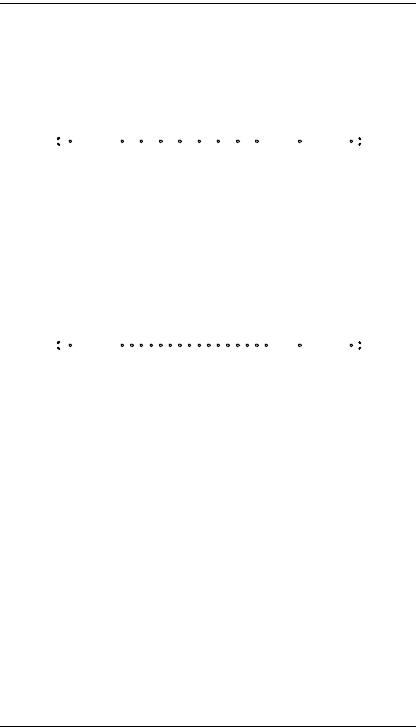
Chapter 1. Introduction
SN9108CO Front View
|
1 |
2 |
3 |
4 |
|
|||
|
|
|
|
|
|
|
|
|
|
|
|
|
|
|
|
|
|
|
|
|
|
|
|
|
|
|
|
|
|
|
|
|
|
|
|
|
|
|
|
|
|
|
|
|
SN9116CO Front View
|
1 |
2 |
3 |
4 |
|
|||
|
|
|
|
|
|
|
|
|
|
|
|
|
|
|
|
|
|
|
|
|
|
|
|
|
|
|
|
|
|
|
|
|
|
|
|
|
|
|
|
|
|
|
|
|
|
|
|
|
|
|
|
|
|
No. |
Component |
Description |
|
|
|
|
|
1 |
Power LED |
Lights when the unit is powered up and ready to operate. |
|
2 |
Port LEDs |
The Port LEDs provide status information about their |
|
|
|
corresponding serial ports. |
|
|
|
Lights Green: Online – the serial device attached to the port |
|
|
|
is powered on and ready. |
|
|
|
Flashes Green: Active – data is being transmitted through |
|
|
|
the port |
|
|
|
|
|
3 |
LAN LED |
Primary and Secondary 10/100/1000 Mbps LAN LEDs. |
|
|
|
RED: 10 Mbps |
|
|
|
RED + GREEN (ORANGE): 100 Mbps |
|
|
|
GREEN: 1000 Mbps |
|
Flashes to indicate that the Serial Console Server is being accessed over the LAN.
13

Serial Console Server User Manual
|
|
|
|
No. Component |
Description |
4Reset Switch Note: This switch is recessed and must be pushed with a small
object such as the end of a paper clip, or a ballpoint pen.
Pressing and releasing this switch when the unit is running performs a system reset.
Pressing and holding this switch in for more than three seconds when the unit is running resets its configuration to the factory default settings.
Note: This does not clear User Account information. See Clear Login Information, page 157, for information on clearing user account information.
Pressing and holding this switch while powering on the switch returns the unit to its factory default firmware level, rather than the firmware version that the switch has been upgraded to. This allows you to recover from a failed firmware upgrade and gives you the opportunity to try upgrading the firmware again.
Note: This operation should only be performed in the event of a firmware upgrade failure that results in the device becoming inoperable.
14

Chapter 1. Introduction
SN0108CO Rear View
1 |
|
|
|
|
|
|
|
|
|
2 |
|
|
|
|
|
|
3 |
|
|
|
|
|
|
|
|
|
|
|
|
|
|
|
|
|
|
|
|
|
|
|
|||||||||||
|
|
|
|
|
|
|
|
|
|
|
|
|
|
|
|
|
|
|
|
|
|
|
|
|
|
|
|
|
|
|
|
|
|
|
|
|
|
|
|
|
|
|
|
|
|
|
|
|
|
|
|
|
|
|
|
|
|
|
|
|
|
|
|
|
|
|
|
|
|
|
|
|
|
|
|
|
|
|
|
|
|
|
|
|
|
|
|
|
|
|
|
|
|
|
|
|
|
|
|
|
|
|
|
|
|
|
|
|
|
|
|
|
|
|
|
|
|
|
|
|
|
|
|
|
|
|
|
|
|
|
|
|
|
|
|
|
|
|
|
|
|
|
|
|
|
|
|
|
|
|
|
|
|
|
|
|
|
|
|
|
|
|
|
|
|
|
|
|
|
|
|
|
|
|
|
|
|
|
|
|
|
|
|
|
|
|
|
|
|
|
|
|
|
|
|
|
|
|
|
|
|
|
|
|
|
|
|
|
|
|
|
|
|
|
|
|
|
|
|
|
|
|
|
|
|
|
|
|
|
|
|
|
|
|
|
|
|
|
|
|
|
|
|
|
|
|
|
|
|
|
|
|
|
|
|
|
|
|
|
|
|
|
|
|
|
|
|
|
|
|
|
|
|
|
|
|
|
|
|
|
|
|
|
|
|
|
|
|
|
|
|
|
|
|
|
|
|
|
|
|
|
|
|
|
|
|
|
|
|
|
|
|
|
|
|
|
|
|
|
|
|
|
|
|
|
|
|
|
|
|
|
|
|
|
|
|
|
|
|
|
|
|
|
|
|
|
|
|
|
|
|
|
|
|
|
|
|
|
|
|
|
|
|
|
|
|
|
|
|
|
|
|
|
|
|
|
|
|
|
|
|
|
|
|
|
|
|
|
|
|
|
|
|
|
|
|
|
|
|
|
|
|
|
|
|
|
|
|
|
|
|
|
|
|
|
|
|
|
|
|
|
|
|
|
|
|
|
|
|
|
|
|
|
|
|
|
|
|
|
|
|
|
|
|
|
|
|
|
|
|
|
|
|
|
|
|
|
|
|
|
|
|
|
|
|
|
|
4 |
5 |
SN0116CO Rear View
1 |
|
|
|
|
|
|
|
|
|
|
|
|
2 |
|
|
|
|
|
|
|
|
|
|
|
|
|
3 |
|
|
|
|
|
|
|
|
|
|
|
|
|
|
|
|
|
|
|
|
|
|
|
|
|
|
|
|
|
|
|
|
|
|
|
|
|
|
|
|
|
|
|
|
|
|||||||||||||
|
|
|
|
|
|
|
|
|
|
|
|
|
|
|
|
|
|
|
|
|
|
|
|
|
|
|
|
|
|
|
|
|
|
|
|
|
|
|
|
|
|
|
|
|
|
|
|
|
|
|
|
|
|
|
|
|
|
|
|
|
|
|
|
|
|
|
|
|
|
|
|
|
|
|
|
|
|
|
|
|
|
|
|
|
|
|
|
|
|
|
|
|
|
|
|
|
|
|
|
|
|
|
|
|
|
|
|
|
|
|
|
|
|
|
|
|
|
|
|
|
|
|
|
|
|
|
|
|
|
|
|
|
|
|
|
|
|
|
|
|
|
|
|
|
|
|
|
|
|
|
|
|
|
|
|
|
|
|
|
|
|
|
|
|
|
|
|
|
|
|
|
|
|
|
|
|
|
|
|
|
|
|
|
|
|
|
|
|
|
|
|
|
|
|
|
|
|
|
|
|
|
|
|
|
|
|
|
|
|
|
|
|
|
|
|
|
|
|
|
|
|
|
|
|
|
|
|
|
|
|
|
|
|
|
|
|
|
|
|
|
|
|
|
|
|
|
|
|
|
|
|
|
|
|
|
|
|
|
|
|
|
|
|
|
|
|
|
|
|
|
|
|
|
|
|
|
|
|
|
|
|
|
|
|
|
|
|
|
|
|
|
|
|
|
|
|
|
|
|
|
|
|
|
|
|
|
|
|
|
|
|
|
|
|
|
|
|
|
|
|
|
|
|
|
|
|
|
|
|
|
|
|
|
|
|
|
|
|
|
|
|
|
|
|
|
|
|
|
|
|
|
|
|
|
|
|
|
|
|
|
|
|
|
|
|
|
|
|
|
|
|
|
|
|
|
|
|
|
|
|
|
|
|
|
|
|
|
|
|
|
|
|
|
|
|
|
|
|
|
|
|
|
|
|
|
|
|
|
|
|
|
|
|
|
|
|
|
|
|
|
|
|
|
|
|
|
|
|
|
|
|
|
|
|
|
|
|
|
|
|
|
|
|
|
|
|
|
|
|
|
|
|
|
|
|
|
|
|
|
|
|
|
|
|
|
|
|
|
|
|
|
|
|
|
|
|
|
|
|
|
|
|
|
|
|
|
|
|
|
|
|
|
|
|
|
|
|
|
|
|
|
|
|
|
|
|
|
|
|
|
|
|
|
|
|
|
|
|
|
|
|
|
|
|
|
|
|
|
|
|
|
|
|
|
|
|
|
|
|
|
|
|
|
|
|
|
|
|
|
|
|
|
|
|
|
|
|
|
|
|
|
|
|
|
|
|
|
|
|
|
|
|
|
|
|
|
|
|
|
|
|
|
|
|
|
|
|
|
|
|
|
|
|
|
|
|
|
|
|
|
|
|
4 |
5 |
|
|
|
|
|
No. |
Component |
Description |
|
|
|
|
|
1 |
Grounding |
The grounding wire that is used to ground the unit attaches |
|
|
Terminal |
here. |
|
|
|
|
|
2 |
Power |
These standard rocker switches power the unit on and off. |
|
|
Switches |
|
|
|
|
|
|
3 |
LAN Ports |
The cables that connect the unit to the primary and the |
|
|
|
backup network interfaces (10/100/1000 Mbps) plug in here. |
|
|
|
|
|
4 |
Power Sockets |
The power cable(s) plugs in here. |
|
|
|
|
|
5 |
Serial Ports |
The Cat 5e cables that connect to the serial devices or |
|
|
|
RJ45-to-Serial adapters plug in here. |
|
15

Serial Console Server User Manual
SN0108COD Rear View (DC Power)
|
|
|
|
1 |
|
|
|
|
|
2 |
|
|
|
|
3 |
|
|
|
|
|
|
|
|
|
|
||||||||||||||||||||||
|
|
|
|
|
|
|
|
|
|
|
|
|
|
|
|
|
|
|
|
|
|
|
|
|
|
|
|
|
|
|
|
|
|
|
|
|
|
|
|
|
|
|
|
|
|
|
|
|
|
|
|
|
|
|
|
|
|
|
|
|
|
|
|
|
|
|
|
|
|
|
|
|
|
|
|
|
|
|
|
|
|
|
|
|
|
|
|
|
|
|
|
|
|
|
|
|
|
|
|
|
|
|
|
|
|
|
|
|
|
|
|
|
|
|
|
|
|
|
|
|
|
|
|
|
|
|
|
|
|
|
|
|
|
|
|
|
|
|
|
|
|
|
|
|
|
|
|
|
|
|
|
|
|
|
|
|
|
|
|
|
|
|
|
|
|
|
|
|
|
|
|
|
|
|
|
|
|
|
|
|
|
|
|
|
|
|
|
|
|
|
|
|
|
|
|
|
|
|
|
|
|
|
|
|
|
|
|
|
|
|
|
|
|
|
|
|
|
|
|
|
|
|
|
|
|
|
|
|
|
|
|
|
|
|
|
|
|
|
|
|
|
|
|
|
|
|
|
|
|
|
|
|
|
|
|
|
|
|
|
|
|
|
|
|
|
|
|
|
|
|
|
|
|
|
|
|
|
|
|
|
|
|
|
|
|
|
|
|
|
|
|
|
|
|
|
|
|
|
|
|
|
|
|
|
|
|
|
|
|
|
|
|
|
|
|
|
|
|
|
|
|
|
|
|
|
|
|
|
|
|
|
|
|
|
|
4 5
SN0116COD Rear View (DC Power)
|
|
|
|
|
1 |
|
|
|
|
|
2 |
|
|
|
3 |
|
|
|
|
|
|
|
|
|
|
|
|
|
|
|
|
|
|
|
|
|||||||||||||||||||||||||||||||||
|
|
|
|
|
|
|
|
|
|
|
|
|
|
|
|
|
|
|
|
|
|
|
|
|
|
|
|
|
|
|
|
|
|
|
|
|
|
|
|
|
|
|
|
|
|
|
|
|
|
|
|
|
|
|
|
|
|
|
|
|
|
|
|
|
|
|
|
|
|
|
|
|
|
|
|
|
|
|
|
|
|
|
|
|
|
|
|
|
|
|
|
|
|
|
|
|
|
|
|
|
|
|
|
|
|
|
|
|
|
|
|
|
|
|
|
|
|
|
|
|
|
|
|
|
|
|
|
|
|
|
|
|
|
|
|
|
|
|
|
|
|
|
|
|
|
|
|
|
|
|
|
|
|
|
|
|
|
|
|
|
|
|
|
|
|
|
|
|
|
|
|
|
|
|
|
|
|
|
|
|
|
|
|
|
|
|
|
|
|
|
|
|
|
|
|
|
|
|
|
|
|
|
|
|
|
|
|
|
|
|
|
|
|
|
|
|
|
|
|
|
|
|
|
|
|
|
|
|
|
|
|
|
|
|
|
|
|
|
|
|
|
|
|
|
|
|
|
|
|
|
|
|
|
|
|
|
|
|
|
|
|
|
|
|
|
|
|
|
|
|
|
|
|
|
|
|
|
|
|
|
|
|
|
|
|
|
|
|
|
|
|
|
|
|
|
|
|
|
|
|
|
|
|
|
|
|
|
|
|
|
|
|
|
|
|
|
|
|
|
|
|
|
|
|
|
|
|
|
|
|
|
|
|
|
|
|
|
|
|
|
|
|
|
|
|
|
|
|
|
|
|
|
|
|
|
|
|
|
|
|
|
|
|
|
|
|
|
|
|
|
|
|
|
|
|
|
|
|
|
|
|
|
|
|
|
|
|
|
|
|
|
|
|
|
|
|
|
|
|
|
|
|
|
|
|
|
|
|
|
|
|
|
|
|
|
|
|
|
|
|
|
|
|
|
|
|
|
|
|
|
|
|
|
|
|
|
|
|
|
|
|
|
|
|
|
|
|
|
|
|
|
|
|
|
|
|
|
|
|
|
|
|
|
|
|
|
|
|
|
|
|
|
|
|
|
|
|
|
|
|
|
|
4 5
No. |
Component |
Description |
|
|
|
|
|
1 |
Power |
These standard rocker switches power the unit on and off. |
|
|
Switches |
|
|
|
|
|
|
2 |
LAN Ports |
The cables that connect the unit to the primary and the |
|
|
|
backup network interfaces (10/100/1000 Mbps) plug in here. |
|
|
|
|
|
3 |
Serial Ports |
The Cat 5e cables that connect to the serial devices or |
|
|
|
RJ45-to-Serial adapters plug in here. |
|
|
|
|
|
4 |
Grounding |
The grounding wire that is used to ground the unit attaches |
|
|
Terminal |
here. |
|
|
|
|
|
5 |
DC Terminal |
The electric leads from your power source connect to this |
|
|
Block |
DC terminal block. |
|
|
|
|
|
16
